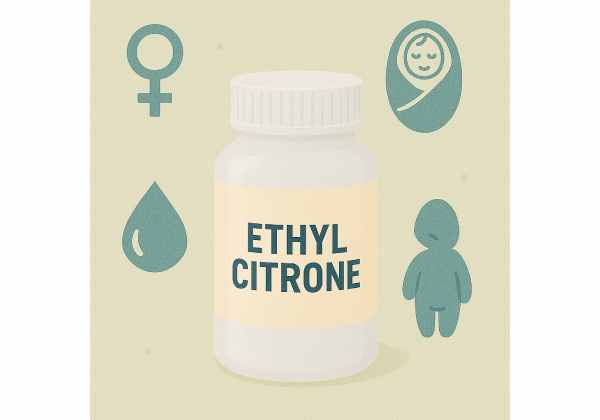Esculin Supplement Guide: Vascular Support, Hemorrhoid Relief & More
Esculin is a natural coumarin glycoside found in horse chestnut (Aesculus hippocastanum) bark and leaves and in some ash species (Fraxinus). It shows antioxidant and anti-inflammatory activity in laboratory and animal studies, and it is widely used in microbiology as the substrate in the classic “bile esculin” test. But there’s a crucial distinction for readers: the best-studied horse-chestnut products...
Esketamine: Comprehensive Guide to Benefits, Dosage, Effects, and Mental Health Applications
Esketamine is a prescription nasal spray used for adults with treatment-resistant depression and for depressive symptoms in major depressive disorder with acute suicidal ideation or behavior. It works differently from traditional antidepressants, acting on glutamate pathways to produce rapid relief for some people—often within hours to days. In 2025, its U.S. labeling expanded to allow monotherapy for treatment-resistant depression...
Essential Amino Acids: Best Sources, Science-Backed Benefits, Dosage & Wellness Uses
Essential amino acids (EAAs) are the nine building blocks of protein your body cannot make on its own. You have to get them from food or supplements. Because muscle, enzymes, hormones, antibodies, and neurotransmitters all rely on amino acids, meeting your EAA needs affects far more than exercise performance. For many people—older adults, those recovering from illness, athletes in...
Essiac Herbal Supplement: Immune Support, Detox, Dosage & Wellness Guide
Essiac is a blended herbal tea promoted for “cleansing,” immune support, and—most controversially—cancer care. The original four-herb formula combines burdock root (Arctium lappa), sheep sorrel (Rumex acetosella), slippery elm inner bark (Ulmus rubra), and Indian or Turkish rhubarb root (Rheum palmatum). A popular variant, Flor-Essence, adds four more herbs (watercress, red clover, blessed thistle, and kelp). While many people...
Estetrol: Hormone Replacement, Birth Control Benefits, Dosage & Risks
Estetrol (often abbreviated E4) is a naturally occurring estrogen that the human fetal liver produces during pregnancy. In recent years, a low, oral dose of estetrol combined with the progestin drospirenone has emerged as a modern option in combined oral contraception. Research suggests estetrol shows tissue-selective activity—strong enough to support contraception and genitourinary health, yet with a comparatively modest...
Estradiol Explained: Menopause Relief, HRT, Dosage, and Risks
Estradiol (E2) is the most potent naturally occurring estrogen. It shapes reproduction, bone turnover, brain and vascular function, skin and hair quality, and the health of vulvovaginal and urinary tissues. When estradiol levels fall—most often around the final menstrual period—many people experience hot flashes, sleep disturbance, mood and cognitive changes, joint aches, and genitourinary syndrome of menopause (GSM). Properly...
Estriol for Menopause: Benefits, Dosage, Safety, and Real Results
Estriol (E3) is the “gentlest” of the three principal human estrogens. In pregnancy, it rises markedly; after menopause, it can be prescribed—most often as a low-dose vaginal medicine—to treat the genitourinary syndrome of menopause (GSM), which includes vaginal dryness, irritation, and pain with intercourse, as well as urinary urgency and recurrent infections. Because estriol binds estrogen receptors less tightly...
Estrogen Therapy: Main Benefits, Proper Use, and Side Effect Profiles
Estrogen is a family of hormones—primarily estradiol, estrone, and estriol—that orchestrate reproductive health, bone turnover, brain and vascular function, and the integrity of genital and urinary tissues. After menopause, estradiol falls sharply and symptoms such as hot flashes, night sweats, sleep disruption, mood shifts, joint aches, and genitourinary changes become common. Carefully prescribed menopausal hormone therapy (MHT)—systemic estrogen with...
Estrone Supplementation: How It Works, Health Effects, Dosage, and Risks
Estrone (often abbreviated E1) is one of the body’s three primary estrogens, alongside estradiol (E2) and estriol (E3). In premenopause, estradiol dominates; after menopause, estrone and its storage form, estrone sulfate, become more prominent—especially in body fat and the bloodstream. Medically, estrone has been used in prescription estrogen therapy (most commonly as estropipate, an estrone sulfate complex) to relieve...
Ethanolamine Explained: Brain, Liver, and Cell Health Benefits, Dosage, and Safety
Ethanolamine (also called monoethanolamine or MEA) sits at an unusual crossroads: it is a simple amine alcohol used widely in industry and cosmetics, and it is also a building block in human biology as the head group of phosphatidylethanolamine, a major cell-membrane phospholipid. Because you may see “ethanolamine,” “MEA,” or related names on product labels—or encounter claims about brain...
Ethisterone Explained: Progestin Therapy, Health Effects, and Modern Alternatives
Ethisterone is a first-generation, orally active progestin developed in the mid-20th century. As a synthetic agonist of the progesterone receptor, it can stabilize the endometrium, reduce bleeding, and oppose unopposed estrogen in the uterus. Historically, it was tried for recurrent miscarriage and abnormal uterine bleeding, sometimes combined with diethylstilbestrol (DES). Over time, newer progestins and micronized progesterone largely replaced...
Ethyl citrate Explained: Food Additive Uses, Supplement Properties, and Dosing
Ethyl citrate is most commonly encountered as triethyl citrate, the tri-ester of citric acid formed with ethanol. You’ll see it on cosmetic labels and in regulatory texts under that precise name. It is a colorless, nearly odorless liquid valued as a solvent, plasticizer, and processing aid. In consumer products, triethyl citrate appears in many deodorants where it helps curb...
Ethyl gallate Supplement Guide: Antioxidant Properties, Health Benefits, and Safety
Ethyl gallate is a plant-derived polyphenol best known as the ethyl ester of gallic acid. In the lab, it is valued for strong antioxidant and antimicrobial actions; in product development, it is explored as a stabilizer and skin-soothing adjunct. Early research also points to anti-inflammatory and cytoprotective effects in models of liver injury, wound repair, oral biofilms, and neurodegeneration....
Ethyl nicotinate: Top Uses, Benefits, Dosage Guidelines, and Side Effects
Ethyl nicotinate is a small, fast-acting ester of niacin used mainly in topical products to increase skin blood flow. In warming creams, balms, and certain cosmetic preparations, it produces a brief flush and heat sensation by dilating tiny vessels in the skin. Researchers also use it as a standardized “provocation” agent to test microcirculation and to benchmark devices that...
Ethyl Pyruvate: Top Health Benefits, Mechanisms, Dosage, and Safety Guide
Ethyl pyruvate is the ethyl ester of pyruvic acid—the small, central metabolite that sits at the crossroads of glycolysis and the Krebs cycle. By esterifying pyruvic acid, chemists created a more lipophilic, shelf-stable molecule that can cross cell membranes more easily and resist rapid breakdown in water. In laboratories and early clinical settings, ethyl pyruvate has been explored as...
Ethyl vanillate Supplement: Antioxidant Properties, Health Applications, and Dosage
Ethyl vanillate is the ethyl ester of vanillic acid—the familiar aromatic building block behind vanilla-like notes in food and fragrance. Beyond its sensory appeal, this phenolic compound has drawn scientific interest for antioxidant behavior and potential roles in skin care. You will also see it listed on the European Union’s register of permitted food flavourings, which sets a regulatory...




















